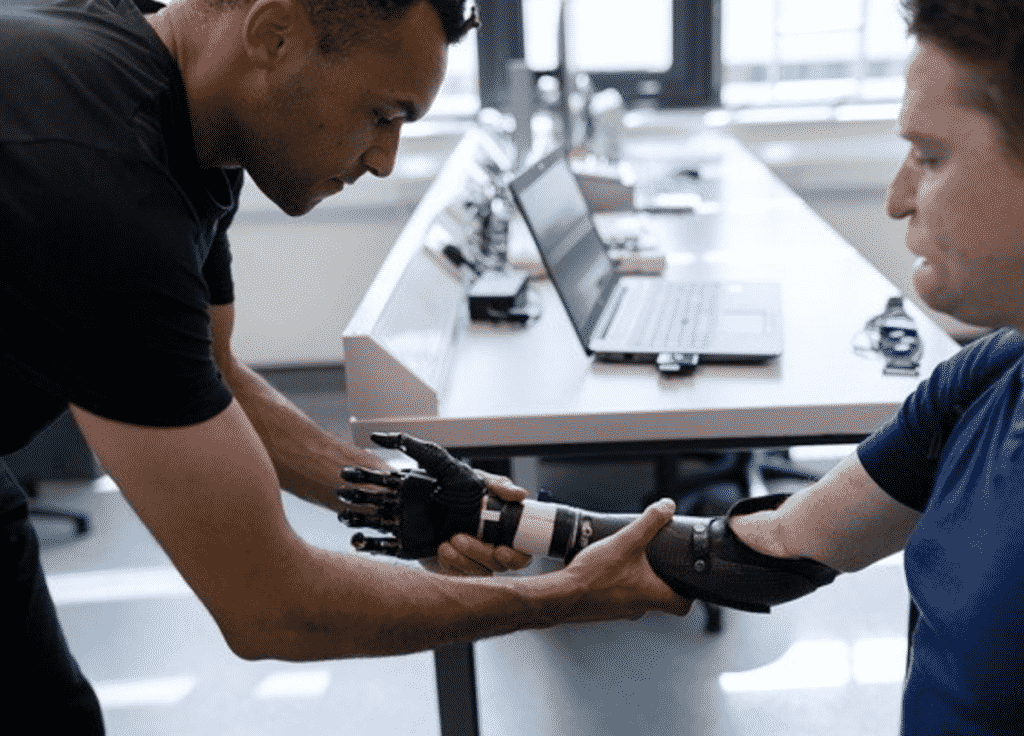Overview
A prosthesis is an artificial substitute for a missing bodily component. A lower limb prosthetic is a prosthesis that replaces any component of the lower limb in order to restore the lower limb’s function and/or appearance. This may consist of artificial components that replace the hip, thigh, knee, ankle and foot.
In terms of prosthetic components and socket design, tremendous progress has been accomplished during the last few decades. Comfort and functionality have improved as a result of the use of lighter, more lasting materials. The level of comfort and function we can expect from a prosthesis is determined by the socket design and components. The components of lower limb prosthesis will be briefly discussed in this article.
Which components of the lower extremity prosthesis that will need to be prescribed depends on the level of amputation. The transfemoral (above the knee- AK) and transtibial (below the knee- BT) amputations are the two most prevalent lower extremity amputations (below the knee- BK). The socket, interface (where the liner contacts the skin), suspension, pylon/frame, knee unit (if applicable), foot/ankle complex, and hip joint are the key components of a lower limb prosthesis (if applicable).
Socket
The team at APC Prosthetics mentions that the prosthetic socket is responsible for transmitting forces from the residual limb to the prosthesis. When walking and standing on a prosthesis, a well-designed socket that is frequently inspected or updated as your form changes will give comfort and stability. To construct a lightweight, durable prosthesis, your socket will often be comprised of a mix of polymers, resin, fiberglass, and carbon fibre.
Foot
The foot-ankle joint in humans is a very complicated functioning unit. It offers both stability and flexibility, absorbs stresses, and generates energy through muscle for efficient and pleasant walking.
Over the last few decades, there have been significant advancements in prosthetic foot design and production, allowing for much more energy efficient and natural walking. Because each patient’s demands and lifestyles are unique, it’s critical to choose the best prosthetic foot for optimal comfort and performance.
Knee
Trans-femoral (above-knee) amputees’ knee mechanisms have also advanced significantly in the last decade, greatly improving safety and function. These advancements have been spearheaded by microprocessor-controlled knee devices.
Modern knee units use hydraulic and pneumatic components to adjust to varying cadence and help walking on slopes and stairs. New design approaches for multi-axial knee units have resulted in enhanced stability without the risk of increased energy consumption due to increasing instability. Your prosthetist will collaborate with you to determine the optimal prosthetic knee prescription for your lifestyle and objectives.
Diabetic Foot Care
Diabetes is a dangerous and complicated disease that can affect any part of the body. Diabetes necessitates regular self-care, and if problems arise, diabetes can lower life expectancy and have a substantial influence on quality of life. Diabetes can impair your foot’s nerves, blood circulation, and infection, putting your feet at danger. Diabetic foot ulcers and amputations are more likely if you have diabetes.
If you’ve suffered a partial foot amputation, you can get a prosthetic created just for you. This is also known as a “toe filler” or “bootie.” The prosthetic device can be engineered to decrease pressure and restore balance while restoring the foot’s anatomical contour. Consult your prosthetist about the best solutions for you.

